This article was republished from “Ride_with_Uncle3” (WeChat ID: Ride_with_Uncle3). Please contact the author for permission to republish.
The previous article introduced the Industry Pool testing by manufacturers in the Nuerburgring, but due to space limitations, some content was not covered. If you haven’t read it, it is recommended to click: “Uncle San: Nürburgring Industry Pool Testing Returns“.
Why do those performance car brands like to go to the Nurburgring for chassis tuning? Why do all high-performance car models compete for the fastest lap record at the Nurburgring? Even Tesla, who always presents itself as the savior of the future world, could not resist coming to the Nurburgring?
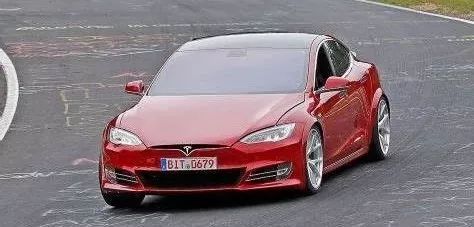
Truth is always truth, and both old and new forces must abide by it.
After I-Pool returned from the Nurburgring, one day, I suddenly heard my German Audi colleague in the office say that there was an accident at I-Pool that week, and an Audi colleague had just had an accident and was sent to the hospital. The cause of the accident was the oil traces on the road. Hearing this, I couldn’t help but feel nervous for him because accidents at the Nurburgring are terrifying. After all, it is a super high-speed track, and the buffer zone is not large. The barrier and forest are next to it.
During the week I participated in I-Pool at the Nurburgring, I also encountered a similar situation. It was at the Eschbach location, and after passing this turn, you will reach the famous viewpoint Brünnchen. This is a segment of road that requires technicality with a series of ups and downs and continuous turns, and horsepower is not the most important thing. After the turn, there is immediately a steeper uphill. Here, due to the inertia, the front wheels will be pressed tightly to the ground by the body that sinks down through the suspension, producing greater grip than usual, so you can enter the turn at a higher speed, start accelerating earlier, and exit the turn at a faster speed.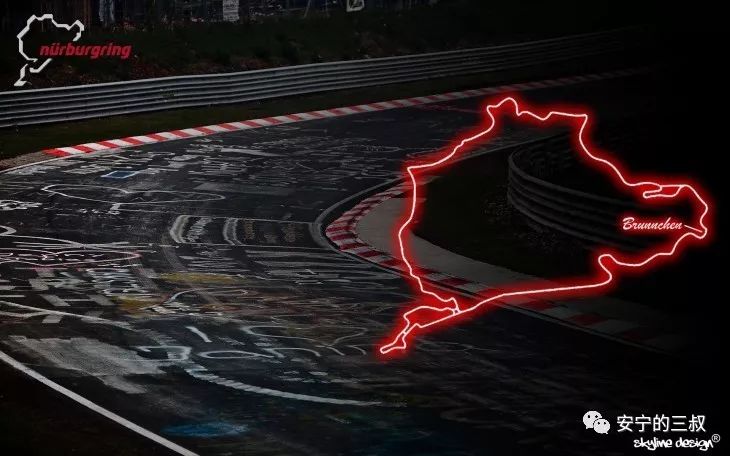
I was concentrating on chasing the car, the Instructor’s car in front of me was already at full throttle in the uphill out of the corner position, and I was preparing to gradually increase the throttle to maximum at the perfect moment. Just then, the car in front suddenly violently twisted, accompanied by a burst of blue smoke rising from the road. It was obvious that there was a loss of control and car-saving action.
I was stunned for a moment, was he showing me some kind of demonstration? He shouldn’t have done that, and he didn’t notify me in advance. Just when I was still wondering, in the blink of an eye, I was there too. Suddenly, the front wheel lost grip, and the car pushed forward in an instant. I realized that there is oil here! I thought it was bad, the most worrying thing at the Nuerburgring happened, I hope I won’t hit the wall! I immediately reduced the throttle and prepared to make a remedial action, but then, the rear of the car swung out.
Luckily, as someone who has experience in drifting, rallying, and circuit racing, the difficulty of saving the car was not a problem for me. Well, I admit that I am bragging – it was actually all thanks to the ESP system. The electronic stability program responded before I made a substantial save action, greatly reducing the difficulty of the save and shortening the save time.
Fortunately, the oil was not too long, and the car only twisted and went past it, with no danger. I even heard the audience next to me sighing. Then, I immediately slowed down and called out on the radio, reporting that the Eschbach corner had oil, and reminding everyone to be safe.
This small scare made me realize that at the Nuerburgring, there can be no moment of carelessness. Not only is the track itself challenging, but it is also too long, with too high a probability of various unexpected accidents happening.
A good ESP system should be like this. Within the boundaries, you can play as much as you want without feeling its presence; once you cross the boundaries, it will unhesitatingly save you. Suddenly, it feels like the strong army of our country. As long as you don’t provoke aliens, it’s okay.
My thoughts go back to 2008, it was my first time at the Nuerburgring, and I was still responsible for tuning shock absorbers in Saxony. I remember it was a Saturday, I went to Trier first to watch the WRC German stop, and then drove to the Nuerburgring for a lap, a day’s drive of over a thousand kilometers.
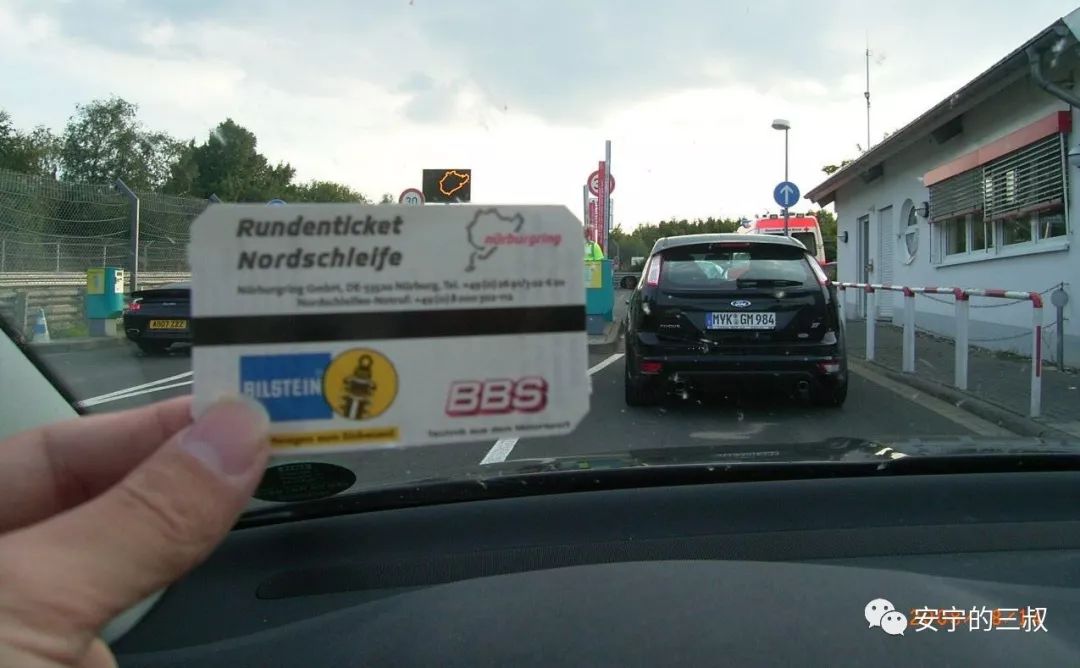 “`markdown
“`markdown
At that time, running one lap at Nurburgring only cost 22 euro, but if you only buy one lap, cash is the only acceptable payment method, no credit cards allowed. After rummaging through all of my pockets, I realized I was a few coins short. Time was running out as the track was about to close, and I couldn’t just let the opportunity of completing the last lap slip away. With a pleading look in my eyes, I looked at the ticket seller, who noticed that I had come a long way just for this. He waived his hand and let me through! I was so grateful that I bowed and thanked him. Looking back, it was funny that I even made a Buddhist salute gesture. But it truly felt like a pilgrimage from the heart.
At that time, I was still young and inexperienced, and my language wasn’t great, so all I can recall from running Nurburgring at that time was nothing or only the rough remarks such as “Holy Shit” and “Awesome”, nothing more.
Honestly, I couldn’t remember anything from the ten minutes of driving. I probably only ran for ten seconds or so. All I remembered was that the shoulders of the road were high, and the strong gravity on the descending and ascending slopes paralyzed my arms and even my brain. My vision became blurry and I couldn’t focus, which led to only ten seconds of actual memory.
Ten years later, after more than a hundred laps of driving, my experience with I-Pool was much more profound. The 20-kilometer racecourse had its own sections named by numbers, which I had never heard of before, but now I think I finally got it. Every bend and turn now had noticeable signs, and I have a better understanding of their characteristics.
Ignorance breeds confidence, and awareness brings reverence. The more I drove, the more I realized why major automobile manufacturers value Nurburgring as the supreme testing ground for their cars. There was no denying that this track is considered as the “ring of truth”.
Nurburgring has its magic.
The elevation of the entire racecourse has a difference of more than 300 meters, which is equivalent to the height of one hundred floors of a building. The highest point in Shanghai is Sheshan, which is 99 meters high. It means that Nurburgring has three Sheshan Mountains’ height cumulatively. Moreover, Nurburgring is a high-speed racecourse. The strong weightlessness and excessive force while descending and ascending slopes are combined with ultra-high turning speeds, which is simply a perfect match.
This theme park like sensation of the excessive and inverse forces is more overwhelming than a roller coaster. When you are on a roller coaster, all you need to do is to make sure that your seat belt is secured, and the rest of the time, you just passively enjoy the stimulation. But when driving on Nurburgring, the steering wheel is something you must control. When you realize that you cannot control either your body or even your conscious mind, and you find yourself even blinking involuntarily due to excessive force, the feeling of terror is inexplicable. Fear is irrational, but keeping a clear head is correct.
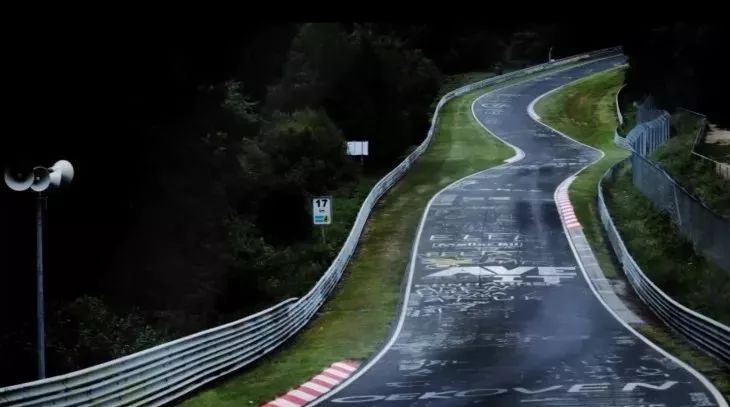
“`If you hold the steering wheel incorrectly, sudden upward movement of the vehicle will cause your arms to dive down, which, if not noticed, can greatly interfere with the steering. Therefore, when driving at the Nürburgring, it is very important to keep your hands in a symmetrical position at 3/9 o’clock, especially in those locations where the vehicle suddenly goes uphill at high speed, such as Schwedenkreuz and Fuchsröhre exits.
At these locations, the speed of the car is very high, and it is not difficult for a 2.0T car to reach 180-200 km/h. A slight mistake can cause serious accidents.
Therefore, in the I-Pool, most test drivers wear regular fire-resistant racing suits and helmets. Trainees are also required to wear racing suits and helmets during the training period. Of course, different companies and organizations have slightly different requirements.
After driving at the Nürburgring for a while, you will naturally understand why the steering of performance cars needs to be slightly heavier. Because when driving at high speeds on these undulating tracks, every part of your body will have some passive shaking and swinging. Your legs and feet can be fixed by the floor, but your arms can only hold onto the steering wheel. The slightly heavy steering torque setting can reduce the direction fluctuation caused by the shaking of the body due to the undulating road surface and increase the stability of the vehicle. Don’t forget that the speed here often exceeds 150 km/h, and unstable steering is not a joke.
In addition, when driving at high speeds on the track, drivers are inevitably more excited and nervous. Slightly heavier steering can also make the driver’s input more gentle and linear.
At Pflanzgarten, the braking point is before the downhill jump. When the jump starts, loosen the brake slightly to avoid locking the wheels. This is because the normal pressure of the tire on the ground decreases, and the available adhesion also decreases. This can also avoid the vehicle’s swaying caused by heavy braking under uneven ground contact of the four wheels. After the car regains grip on the ground, immediately step on the brake again and then enter the curve. A well-balanced suspension can greatly simplify the difficulty of braking.
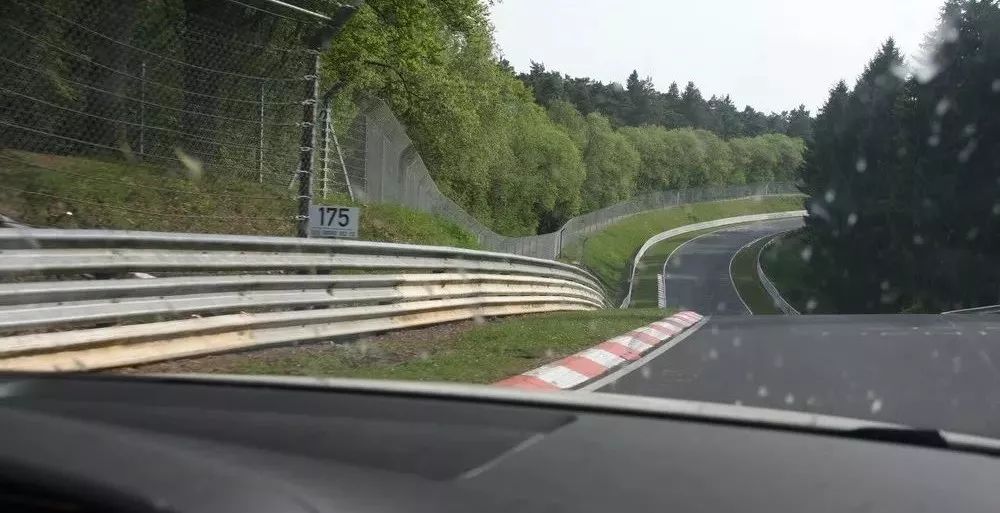
In addition to dizzying steep slopes, another charm of the Nürburgring is the small undulations on the road surface that can’t be seen with the naked eye. These small undulations are located in various road sections, some near the braking point, some at the apex of the curve, and some at the exit of the curve. When passing through these undulations, the car will tend to lift, which poses a great challenge for the suspension tuning.If the suspension is too soft, the car will become unstable when passing over bumps, causing significant fluctuations in tire contact pressure and affecting the grip of the tires. However, if the suspension is too hard, the wheels will leave the ground and the car will start to bounce. In this case, it becomes difficult to brake and take turns.
When driving on the Nürburgring with cars of different power levels, you will feel the hidden bumps and grooves more profoundly. You cannot see them with your eyes, but you can feel them when your car passes over them.
For example, in the area before Mutkurve, if you drive a less powerful car at a speed of around 180 km/h, the car feels stable with no issues. However, when driving a high-powered car at 220 km/h, you will notice a significant “increase” in the feeling of the bumps on the road. Therefore, you need to adjust the direction of the car before passing over this bump to avoid losing grip due to the bouncing wheels and the twisting direction causing loss of control.
Therefore, it is essential to gradually increase speed when driving on the Nürburgring. The car reacts differently to the same road conditions at different speeds. Suddenly changing to a faster car and driving at a higher speed through the same turn may surprise you.
The suspension tuning is crucial when driving on the Nürburgring. If the suspension is too soft, the car will have excessive body movements, poor stability, and unstable changes in tire load. If the suspension is too hard, the bumpy surface of the Nürburgring, especially at high speeds, will cause a loss of tire grip. Therefore, balancing the suspension is crucial.
For example, when creating the lap record with the Golf GTI Club Sport S, the suspension was set to the comfortable mode. The sport mode with a harder suspension is only suitable for wide and smooth tracks.
Another reason why the Nürburgring is called the “Green Hell” is that it becomes super slippery in the rain, almost like driving on an icy track.
The Nürburgring has different road conditions due to varying maintenance levels. The newly paved sections have a higher coefficient of friction, with less remaining rubber at the braking points, and better grip on wet ground. However, some older asphalt sections, especially at the braking and turning points, have become extremely smooth due to the wear and tear of tires. The tire particles embedded in the road surface form a layer of “rubber film” that makes it difficult for rainwater to penetrate and significantly reduces grip.If you still use dry braking and dry line to handle corners, you will be shocked when it rains. The corners that provide infinite grip on dry pavement will make you question the meaning of life on a wet surface, such as Hatzenbach, Adnauer Forst, Breidscheid, Whipermann, etc. You must avoid the normal lines, or else you may end up hitting the wall.
During a week at the Nürburgring I-Pool, I was lucky enough to experience the super slippery corners in the rain. These corners give you infinite grip on dry pavement, but will make you question the meaning of life on a wet surface. You have to be careful because the grip on the previous lap may not be the same on the next lap. You need to concentrate on finding the grip and try to find a fast and stable line, which is why so many famous tire manufacturers come here to test.
The scariest thing is not rainy weather, but when the track is partly dry, partly wet, or even alternating between the two. You must always be careful and keep an eye out for good grip, and try to find a fast and stable line. This is also why so many famous tire manufacturers come here to test.
Lastly, aerodynamic effects can also be clearly demonstrated here, as there are many high-speed sections. Although the Beetle Turbo (2.0T) has a classic and cute appearance, its aerodynamic effect is not ideal because its shape is like that of a wing. Although it already has a large spoiler.
Compared with the GTI model with similar chassis structure and power (PQ platform vs. MQB platform), it is obvious that the stability on the rear axle is not good enough on high-speed roads (over 180 km/h), especially when entering a high-speed turn while braking, the instability of the tail is obvious.
Moreover, the steep slopes and small undulations of the Nürburgring, as mentioned earlier, make good aerodynamic effect even more important and obvious. I believe that for those monsters that can easily exceed 200 km/h, this is particularly important.
In short, the Nürburgring is really a touchstone for performance cars, which can maximize the shortcomings of the car and then make adjustments accordingly. Suspension, steering, tires, aerodynamics, and even ESP are all important for performance, and not a single one can be overlooked. Cars that can run well here can almost run well anywhere else.Here, besides being the “ring of truth,” it is also a litmus test for development engineers. If your driving skills, vehicle control ability, vision management and other abilities are not enough, you will not be able to test the car safely and effectively in the Northern Loop. However, once you reach this threshold of testing, you will have a higher understanding of vehicle dynamics, suspension movements, etc. Therefore, this is also a good place to train.
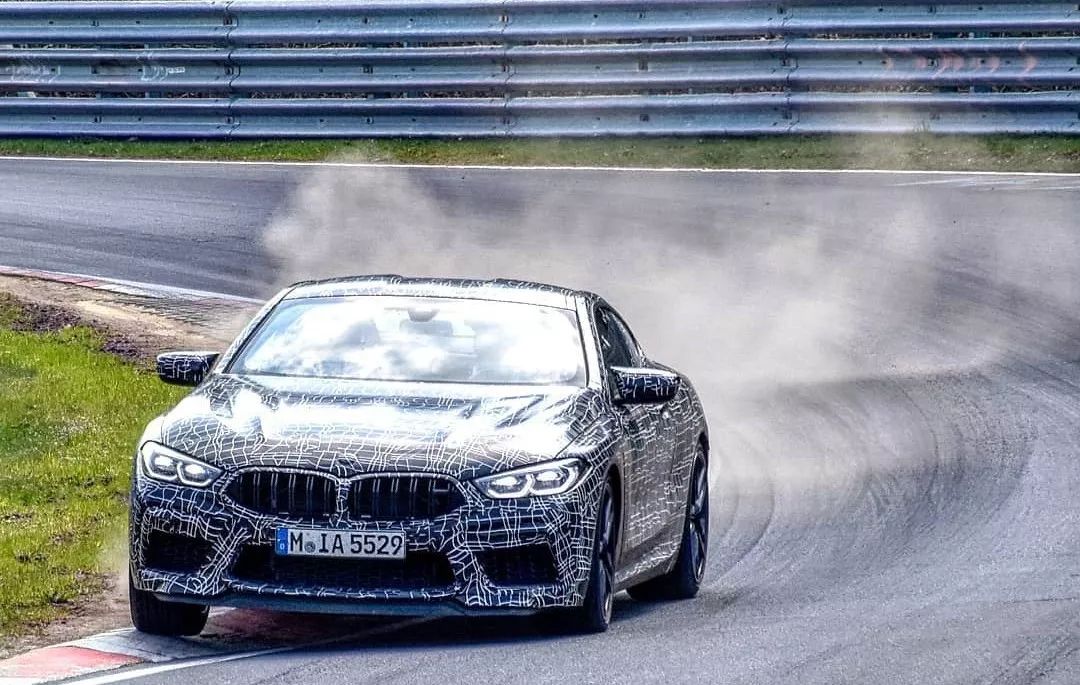
Therefore, for cars and people, whether you are a newcomer or an old player, as long as you play with high performance rather than autonomous driving, the Northern Loop is waiting for you.



- Experience Tesla V10 system before everyone else | Big unboxing* Autopilot Progress According to Elon Musk’s Twitter

This article is a translation by ChatGPT of a Chinese report from 42HOW. If you have any questions about it, please email bd@42how.com.